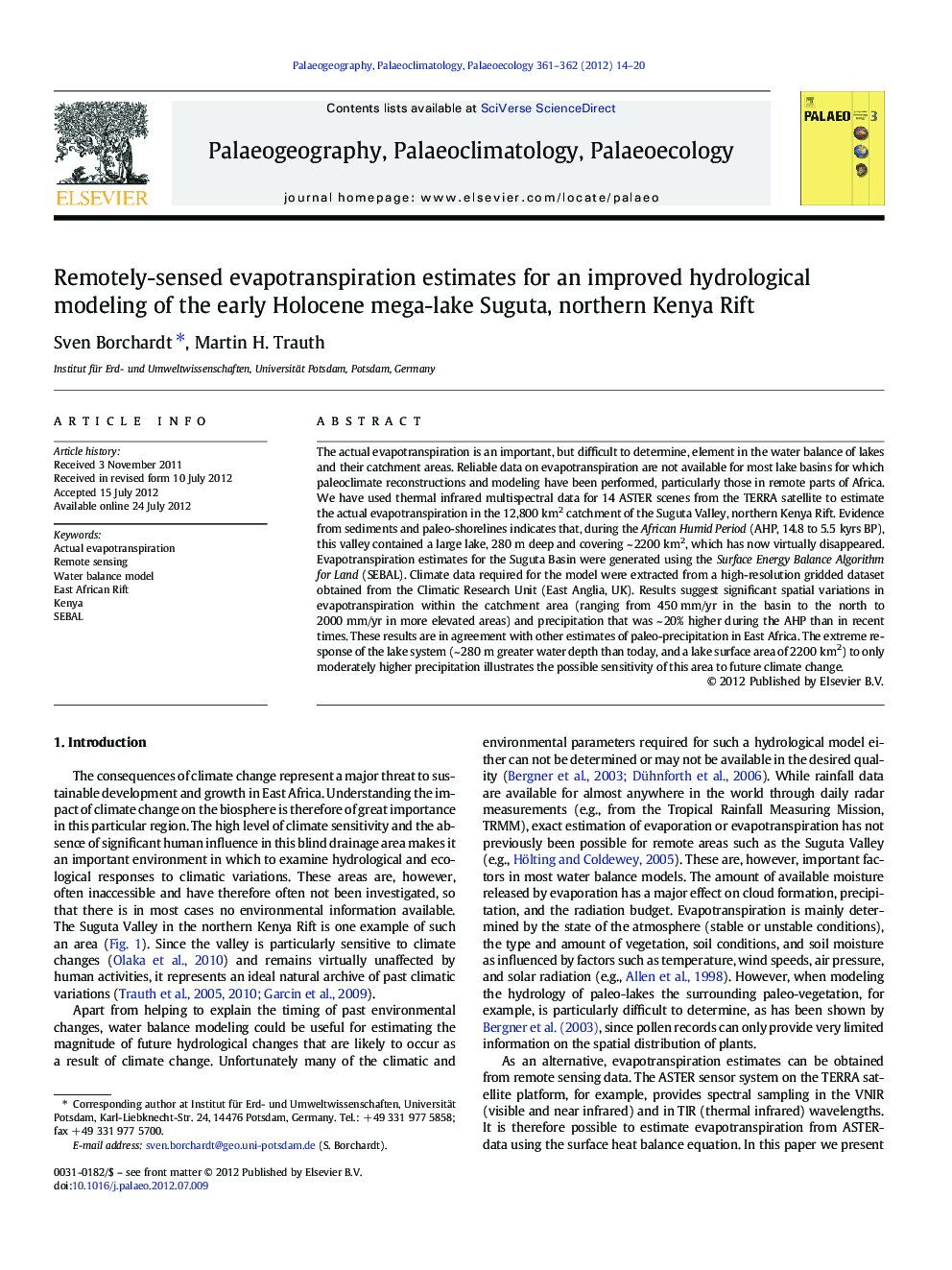| کد مقاله | کد نشریه | سال انتشار | مقاله انگلیسی | نسخه تمام متن |
|---|---|---|---|---|
| 4466776 | 1622221 | 2012 | 7 صفحه PDF | دانلود رایگان |

The actual evapotranspiration is an important, but difficult to determine, element in the water balance of lakes and their catchment areas. Reliable data on evapotranspiration are not available for most lake basins for which paleoclimate reconstructions and modeling have been performed, particularly those in remote parts of Africa. We have used thermal infrared multispectral data for 14 ASTER scenes from the TERRA satellite to estimate the actual evapotranspiration in the 12,800 km2 catchment of the Suguta Valley, northern Kenya Rift. Evidence from sediments and paleo-shorelines indicates that, during the African Humid Period (AHP, 14.8 to 5.5 kyrs BP), this valley contained a large lake, 280 m deep and covering ~ 2200 km2, which has now virtually disappeared. Evapotranspiration estimates for the Suguta Basin were generated using the Surface Energy Balance Algorithm for Land (SEBAL). Climate data required for the model were extracted from a high-resolution gridded dataset obtained from the Climatic Research Unit (East Anglia, UK). Results suggest significant spatial variations in evapotranspiration within the catchment area (ranging from 450 mm/yr in the basin to the north to 2000 mm/yr in more elevated areas) and precipitation that was ~ 20% higher during the AHP than in recent times. These results are in agreement with other estimates of paleo-precipitation in East Africa. The extreme response of the lake system (~ 280 m greater water depth than today, and a lake surface area of 2200 km2) to only moderately higher precipitation illustrates the possible sensitivity of this area to future climate change.
► We calculate the actual evapotranspiration using remote sensing data.
► The value is used to reconstruct a paleolake for the catchment area.
► We use an energy-based lake-balance model.
► An increase in precipitation of 21% is needed to reconstruct the paleolake.
Journal: Palaeogeography, Palaeoclimatology, Palaeoecology - Volumes 361–362, 15 November 2012, Pages 14–20